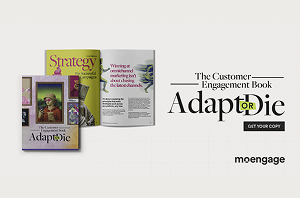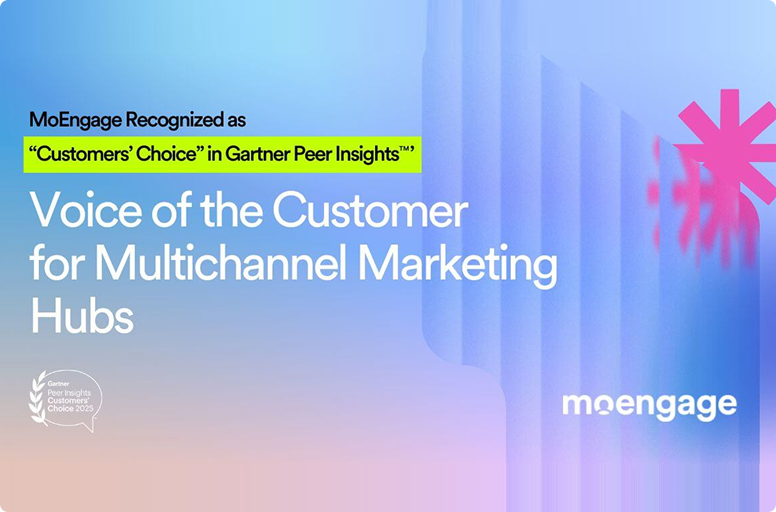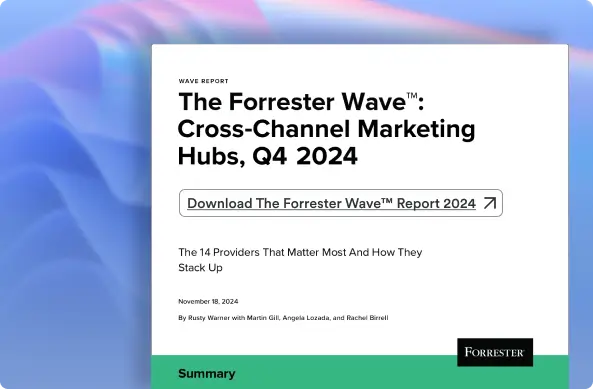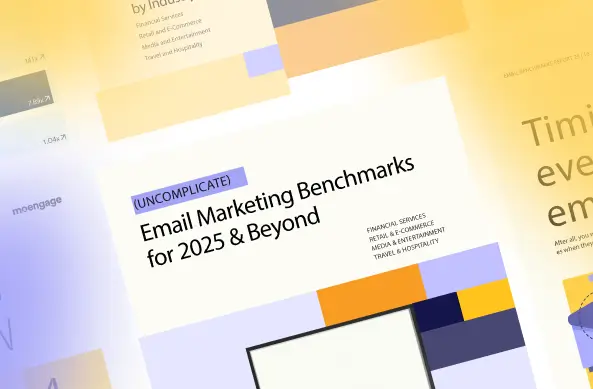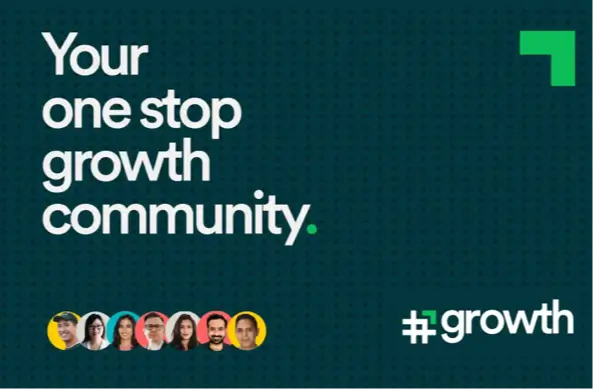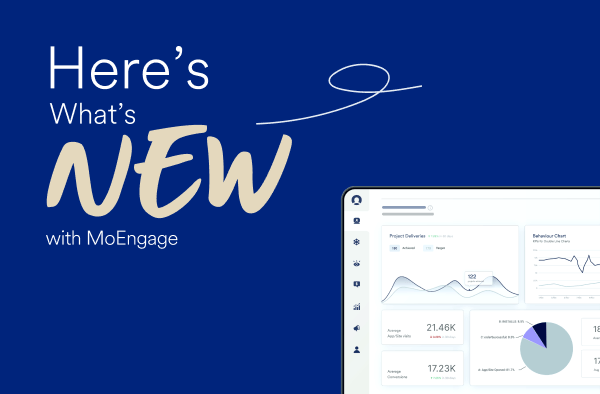Build Deeper Customer Segments with Aggregation Filters
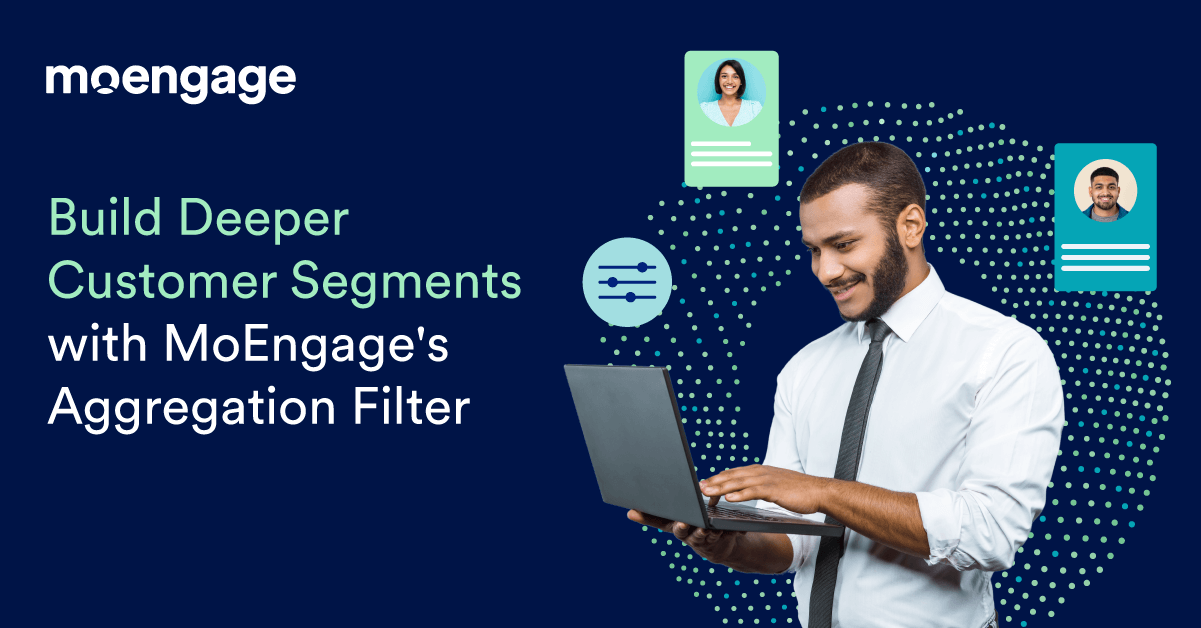
Reading Time: 3 minutes
Audience engagement is crucial in hyper-personalization. It has to be very specific. For example, you might be giving regular discounts to every customer. But suppose you want to provide exclusive discounts to your high-value customers who purchased more than a certain amount or completed a specific number of transactions in the last few months. In that case, you’ve to narrow down the segmentation and build deeper customer segments.
That’s where MoEngage’s Aggregation Filters can help you.
What are Aggregation Filters?
The Aggregation Filters is an add-on filter to the segmentation module on MoEngage’s platform. It allows you to narrow your audience engagement and build deeper customer segments by applying aggregates such as Sum, Average, Min, Max, etc., on event attributes. You can aggregate any numeric attribute over a period of time and create segments based on value or even compare the aggregated values to filter out the right users.
Let’s understand this better with an example. Let’s assume you want to send discount offers to customers who have placed at least two orders in the last two weeks with a total spend of more than 1000. Your segmentation query will be as follows:
Event = “order placed”
Event attribute = “Price”
Aggregator operation = “SUM”
Conditional operator = “is greater than”
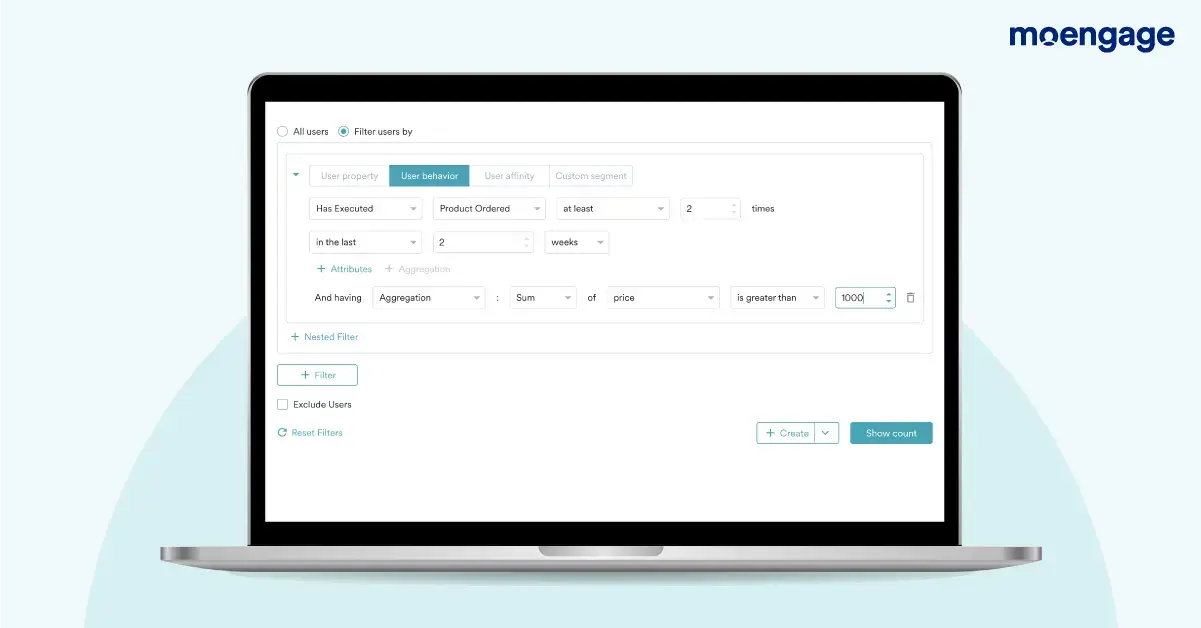
How do Aggregation Filters help?
With this update, marketers can create deeper audience segments using aggregates from within the platform and reduce their dependency on the data teams.
Segmenting audiences based on aggregates such as sum, min, max, and average on event attributes can be a complex process. Marketers earlier had to depend on their teams to crunch data and multiple tools to do so.
With this new feature, marketers don’t have to look outside. They can leverage the Aggregation Filters under the segmentation module to create deeper audience segments from within the platform without any dependencies.
| Note: Aggregation Filters are available only in the User Behavior Section of Segmentation. |
How do Aggregation Filters work?
Let’s imagine you want to run a discount campaign, but only for those customers whose purchases increased by 20% over the previous month. In this case,
- Use the + Aggregation button to add a new aggregation functionality.
- Add the purchase (event) conditions based on which you wish to segment customers. For example, in this case, customers who purchased at least two times in the last two weeks and had a high order value.

- Select the date range within which the customer made the purchase. Aggregation Filters can be applied for 30 days/4 weeks/ 720 hours / 1 month.
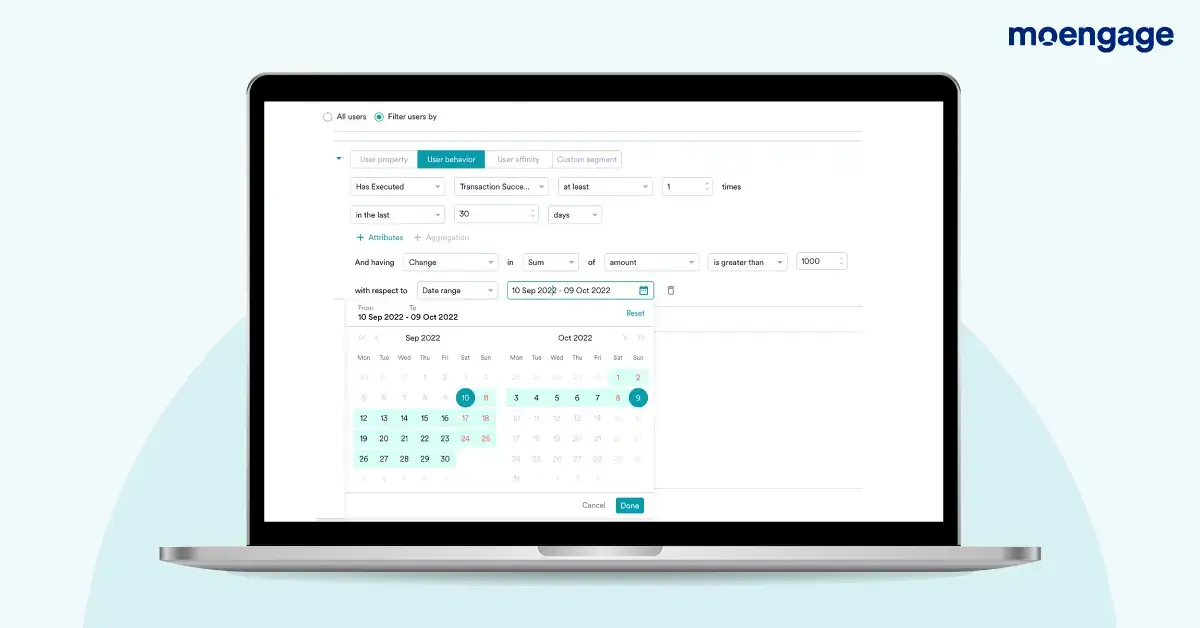
- Select the Percentage Change. For example, you can segment customers who have purchased at least three times in the last 30 days and spent 25% more than the month before. The Change and Percentage Change fields can be negative too.
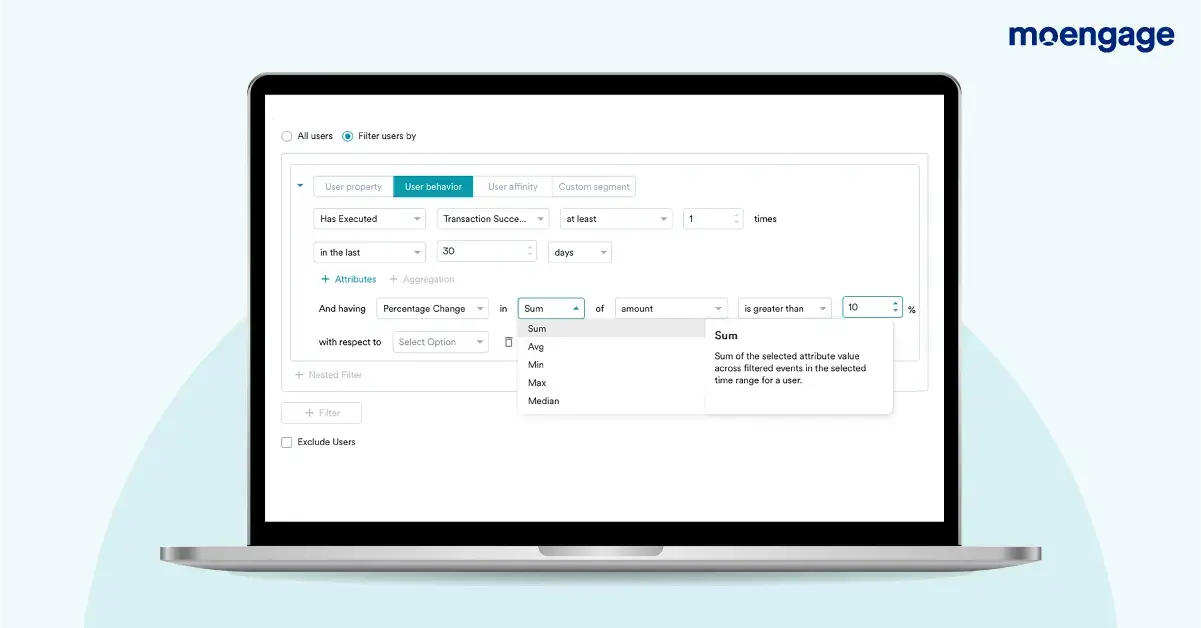
| Here’s a detailed help doc on using the Aggregation Filter. |
Who can use the Aggregation Filter?
E-commerce: Shopping brands can use this feature to identify high-spending customers and send them special discounts. For example, brands can create Aggregation Filters to segment customers who performed at least 10 transactions over the past month and had a combined bill value of over 20,000/-. They can then send these customers an extra discount on their next purchase.
BFSI: Credit card vendors can leverage Aggregation Filters in segmentation to identify and segment customers that can be offered card upgrades. They may reach customers who made at least 500 transactions in a month and increased total spend by over 1,000/- from the previous month.
Music, Gaming, and OTT: Entertainment brands can use the Aggregation Filters to identify customers who consume the most amount of content in a particular time period and send them referral campaigns. For example, brands can isolate customers who consumed content at least 100 times or more than 200 minutes over the past month. They can then send them a campaign incentivizing referrals.
How to get started?
This feature is free and available globally. If you’re an existing customer, reach out to your favorite MoEngage Customer Success team member. If you’re new to MoEngage and want to use the Aggregation Filter, drop an email to [email protected].

